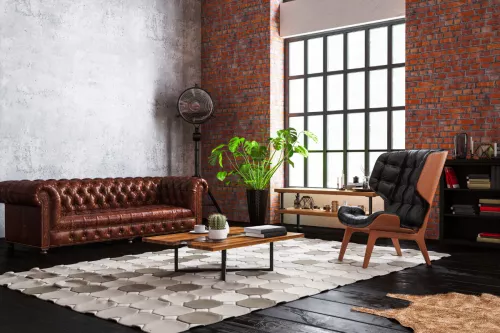When we see a silo nearby a road or across the countryside storing grain on farms, we don’t really think about a potential home on it, right? Wrong! With time, we are changing our concept of what can be a home. We are opening a sea of possibilities, and silo houses are in it.
Silo-converted homes are not just a unique experience but it can also be a testament to innovative architectural design, offering a blend of rustic charm and modern functional way of living. These structures, traditionally used for agricultural storage, have been creatively repurposed into cozy and distinctive homes.
As you can imagine, it isn't easy to convert a silo into a home, there is a lot of work to be done; in the house and also in the person who decides to live in it. But when one is determined to change and make the difference, this transformation can become something revolutionary!
Here, we will discuss some points about silo converted homes, costs and considerations, the pros and cons of living in one and a lot more. Continue reading!
Converting a Concrete Silo into a Home: Costs and Considerations
Transforming a silo into a cozy and unique living space is an adventure in creativity and innovation, but it's also a journey that comes with its own set of financial and logistical considerations.
The cost of converting a silo can vary widely based on several factors, including the size of the silo, its location, and its current condition. For instance, larger silo homes, like the Monte Silo with 1,800 square feet of living space, have been constructed for less than $200 per square foot, amounting to around $360,000 in total costs.
On the flip side, smaller and more basic conversions can start from as low as $30 per square foot. It's crucial to remember that while older silos might appear more wallet-friendly at the outset, they could require extensive renovations to become livable spaces.
When considering building a concrete grain silo on residential premises, the journey becomes even more intricate. Challenges abound, from navigating the maze of permits and approvals required by local authorities to ensuring full compliance with zoning regulations and addressing any environmental or safety concerns that might arise.
The construction process itself demands a unique blend of specialized equipment and expertise, particularly in managing concrete work and maintaining structural integrity.
The financial aspect of building a concrete silo is equally variable, influenced by the silo's dimensions, the prevailing construction market, labor costs, and the specific conditions of the site. Expenses can encompass a wide range, including site preparation, the cost of concrete materials, labor, equipment rental, and professional fees for engineering and design, not to mention additional features like ventilation systems or access platforms.
Given these complexities, it's highly advisable for aspiring silo homeowners to engage with local construction professionals, engineers, and regulatory bodies. These experts can provide invaluable insights and more accurate cost estimates tailored to the individual's specific location and project requirements.
By doing so, potential silo dwellers can navigate the intricate process of transforming these agricultural structures into dream homes with a clearer understanding and better preparation.
Living in a Silo: What to Expect
Choosing to live in a silo offers a unique living environment that combines circular aesthetics with functional living spaces. The interiors of these homes can be surprisingly spacious and filled with natural light, thanks to features like motorized skylights. But of course, it is still smaller than a traditional home. It falls into the tiny homes category.
Besides being small, to convert a silo into a home can be expensive. Unless you do everything yourself, you can expect to spend $40,000 to $50,000 by hiring professionals.
You also need to be prepared to change the size of your furniture, everything needs to be brought downsize to fit the silo sized structure. Apart from some challenges, living in a silo home is really unique, it is almost like living in a work of art.
The Popularity of Silo Homes
Silo homes are gaining popularity for their sustainability, efficiency, and unique aesthetic. They stand out for their ability to repurpose existing structures, reducing waste and incorporating green building principles. The most popular types of silos for conversion are grain bins and corn cribs due to their availability and suitability for residential adaptation.
Pros and Cons of Silo Home Dwellers
Living in a silo home is not without its challenges. Insulation is a critical factor to consider, as these metal structures can be prone to extreme temperatures. Innovative solutions, such as the use of insulated paint or a combination of foam and fiberglass insulation, can help create a comfortable interior climate. Let’s check some pros and cons this type of home:
Advantages
Low Maintenance Required for Silo Homes
Maintaining a grain bin home involves minimal effort, primarily focusing on routine checks of three key structural components: the foundation, walls, and roof. Regular inspections of these areas are typically all that's needed to keep the structure in good condition.
Environmental Sustainability of Grain Bin Homes
Silo homes are particularly suited for integrating renewable energy solutions, such as solar power, making them an environmentally friendly housing option. Additionally, their design includes comprehensive insulation, which naturally enhances the internal heating of the space, potentially leading to significant savings on heating, ventilation, and air conditioning (HVAC) expenses annually.
Cost-Effectiveness of Living in a Grain Bin
Embracing a minimalist lifestyle means making economical choices, and silo homes align with this principle due to their affordability in acquisition, construction, and upkeep. On average, the cost per square foot for silo homes is about $30, offering a budget-friendly housing solution.
Challenges
- Finding experienced builders and contractors for silo houses can be more challenging than for conventional homes. This scarcity means you might need to take a more hands-on approach in managing minor construction details and decisions if you opt for a silo home.
- While silo homes offer a unique and sustainable living option, it's important to note their longevity may not match that of traditional homes. Typically, grain bin structures have a lifespan ranging from 30 to 50 years, making them suitable for immediate housing needs but potentially less attractive as a long-term property investment.
- Furthermore, the legality of constructing grain bin homes varies by location due to specific building codes and zoning regulations. It's crucial to verify that building a silo home is permissible on your intended plot of land. Engaging with local building authorities or consulting online resources can provide the necessary insights into applicable regulations and ensure compliance.
People also ask
Can I live in a silo?
Yes, with proper conversion and adherence to local building codes, a silo can be transformed into a livable and unique home.
What is the most popular type of silo for conversion?
Grain bins and corn cribs are among the most popular due to their availability and structural suitability for residential use.
What should I know before moving into a silo home?
Consider insulation, interior design challenges due to the circular shape, and potential zoning or building code issues specific to your area.

 Marcio Vasconcelos
Marcio Vasconcelos





